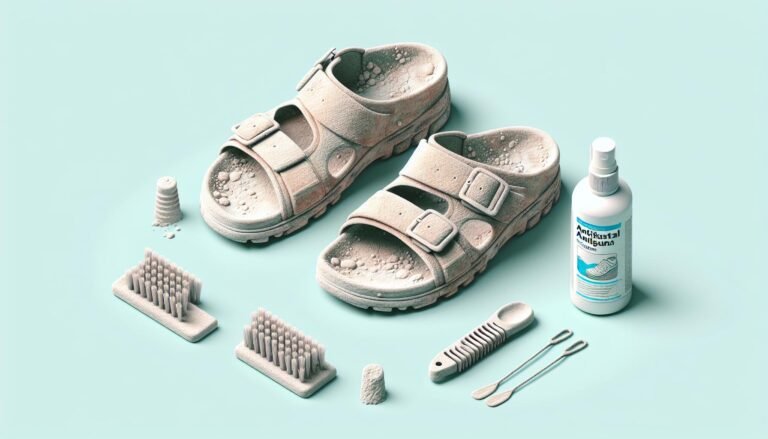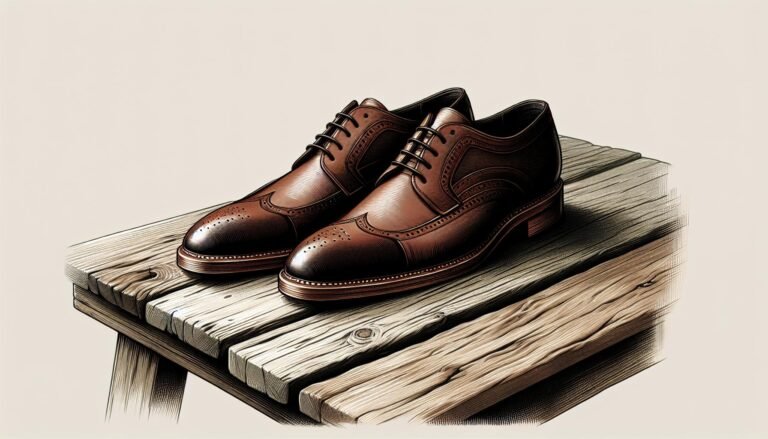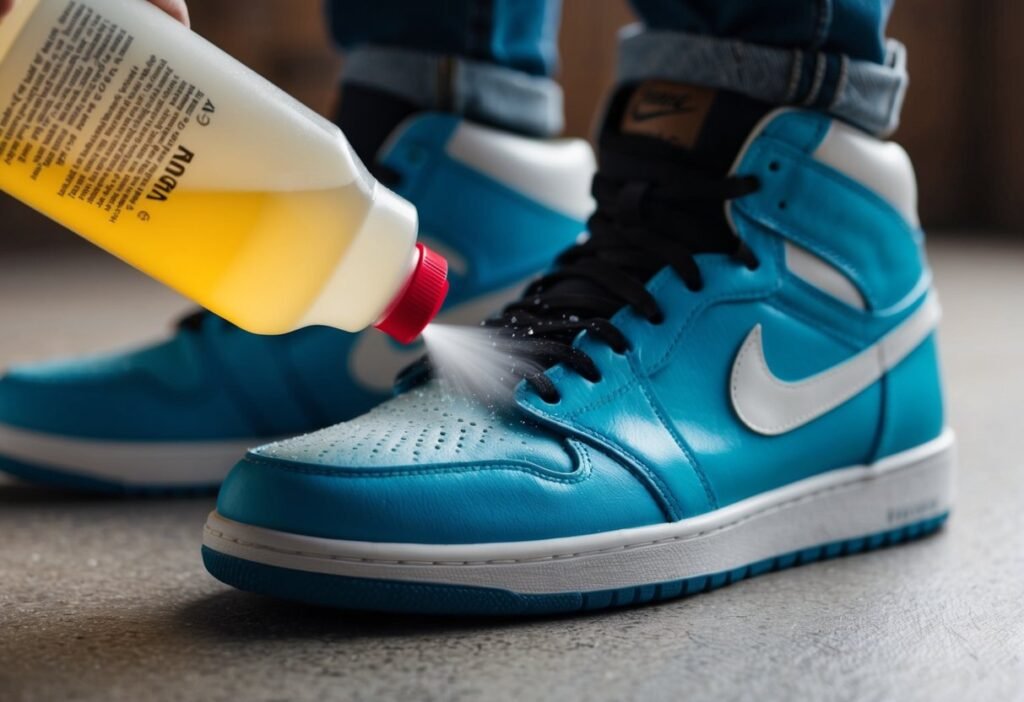Do People Usually Leave Their Slippers Outside the bathroom When Going for a Shower: Unpacking Cultural Norms
Shower routines vary widely from person to person, but a common question that arises is whether people usually leave their slippers outside when taking a shower. This action is not just a matter of personal preference but often ties into broader cultural norms and practical considerations. In many societies, removing footwear before entering the bathroom or a home is a practice rooted in maintaining hygiene and cleanliness. This is especially true in cultures where the distinction between outdoor and indoor spaces is strictly observed to keep the interior living space clean.

The decision to leave slippers outside before showering can be linked to the role of footwear indoors and the objective to prevent tracking dirt or germs into clean, personal spaces. Taking off shoes or slippers at the door also reflects a respect for the home and can be viewed as a sign of comfort and relaxation. It symbolizes the transition from public to private life. While some may consider this practice as an irrefutable standard within their households, for others, whether slippers are left outside is determined by social and personal reasons, such as the material of the flooring or the design of the living space.
Key Takeaways
- Leaving slippers outside before a shower is influenced by cultural and hygiene concerns.
- The practice of removing footwear is part of differentiating public from private spaces.
- Personal comfort and the cleanliness of living spaces often dictate shoe removal habits.
Cultural Norms and Practices

This section will explore the various cultural norms and practices relating to shoe removal, focusing on different regions and the intricacies of this common yet culturally significant act.
Global Overview
Across the globe, the practice of where to leave footwear, such as slippers, before entering a bathroom or shower area varies. In many cultures, it’s customary for people to remove their shoes before entering a home and this extends to the practice of taking showers. Footwear is often considered dirty because it contacts with the outside ground, hence it is kept separate from clean indoor areas.
Asia and Shoe Removal
In Asia, removing shoes before entering living spaces is a sign of respect and cleanliness. Countries like Japan, Korea, and Thailand observe this as a common custom. Slippers designated for indoor use are generally kept inside the house near the entryway. It is also typical in these countries for individuals to switch to bathroom-specific slippers before taking a shower, leaving their regular indoor slippers outside the bathroom.
Japanese Etiquette
Japan has a deeply engrained custom where shoes are removed not only in homes but also in certain public establishments. This act symbolizes respect towards the host and purity of the household. Furthermore, it’s common to find a variety of slippers for guests, and a separate set often labeled for use in the bathroom. The Japanese meticulously follow these etiquettes to maintain the sanctity of their living spaces and uphold traditional values.
Hygiene and Cleanliness

When it comes to hygiene and cleanliness, the practices concerning footwear in the home play an important role in controlling the spread of germs and maintaining a clean living environment.
Bacteria and Germs
A key concern with wearing outdoor footwear indoors is the transfer of bacteria and germs into the home environment. Research indicates that the soles of shoes can harbor a diverse collection of microorganisms, some of which have the potential to be harmful. For instance, studies have found E. coli, a bacteria commonly associated with feces, on the exterior of shoes. The removal of shoes before entering living spaces reduces the risk of bringing these microorganisms into areas where they may pose a health risk, particularly in spaces associated with personal cleanliness, such as bathrooms.
Indoor Cleanliness
Maintaining indoor cleanliness is greatly aided by the separation of outdoor footwear from indoor spaces. Leaving shoes at the door or transitioning into slippers can significantly reduce the introduction of dirt and debris, which in turn lessens the frequency and intensity of cleaning required to keep the home environment hygienic. This practice ensures that areas like showers remain clean, supporting personal hygiene by providing a sanitary space for individuals when they are most vulnerable to bacteria exposure.
The Role of Footwear Indoors

The transition between outdoor shoes to indoor footwear is a common practice to maintain cleanliness and comfort within the home. This section explores the customary shift from shoes to slippers once inside and the benefits of having designated indoor footwear.
Indoor vs. Outdoor Shoes
Indoor shoes are typically worn to protect the cleanliness of a home and to provide comfort. Removing outdoor shoes before entering living spaces prevents dirt, bacteria, and other outdoor contaminants from being tracked inside. This practice is not only hygienic but also helps in preserving the cleanliness of the floors and carpets. In contrast, outdoor shoes are designed to withstand environmental elements and provide protection and support while outside.
- Outdoor Shoes: Designed for environmental protection, durability and to handle various terrains.
- Indoor Shoes: Serve to maintain personal comfort and home cleanliness.
Designated Indoor Slippers
Indoor slippers are a specific type of indoor shoe that offer comfort and warmth, often made from soft materials with a structure that is easy to slip on and off. They are particularly useful in homes with cold floor surfaces. Owning a pair of indoor slippers is beneficial, as they are:
- Solely used inside the house, preventing outdoor dirt and germs from entering.
- Barefoot Alternative: Provide a clean and safe option compared to walking barefoot, which may expose feet to dirt and potential injuries from unseen debris.
Many households encourage guests to remove shoes at the entryway and may provide guest slippers for use during their stay. This reinforces the separation of outdoor footwear from the indoor environment, maintaining a shoe-free living space.
Cultural Significance of Removing Shoes

In many cultures, removing shoes before entering a home or a sacred space is a significant custom that reflects both respect and religious observance. It is a practice deeply rooted in traditions that are often specific to certain regions or religions.
Respect and Courtesy
In countries like Japan, taking off shoes at the entrance of a home is not merely a hygienic practice, but a gesture of respect and courtesy. It signifies an individual’s awareness and adherence to social protocol, reflecting a conscious effort to honor the cleanliness of the host’s space. Similarly, in a broader Asian context, guests often remove their shoes to show deference to the home and its inhabitants, ensuring that they do not carry the dirt and impurities of the outside world into the personal and cared-for spaces of others.
Religious Practices
Religious observance is another key reason behind the custom of removing shoes. Many religions have specific instructions regarding shoe removal. For instance, worshippers take off their shoes before entering into certain churches or places of God as a sign of reverence. It is a gesture that symbolizes humility and the purity required in a place of worship. The custom can vary between different faiths, but the underlying sentiment remains the same—to approach the divine with respect and without the contamination and metaphorical weight of the external environment.
Practical Considerations

When discussing leaving slippers outside the bathroom, two primary aspects warrant attention: the comfort and convenience slippers offer, as well as the protection they provide to various floor types. These factors influence whether individuals choose to leave their slippers outside the shower.
Comfort and Convenience
Slippers are designed for comfort, with soft materials and a cushioned footbed to make walking around the house a pleasant experience. They are also convenient, as they are typically lightweight and easy to slip on and off. This convenience is particularly appreciated when someone is entering and exiting the shower, as it avoids the need to bend down and fasten shoes.
Floor Types and Protection
Regarding floor types, there is a distinct difference in handling slippers with respect to tatami mats compared to standard flooring. The soft woven straw of tatami mats is susceptible to damage and dirt from outdoor shoes, and therefore slippers are usually not worn on them to maintain the mats’ condition. On other floors, slippers serve as a protection barrier, preventing dirt from outside contaminating the clean bathroom environment. Keeping slippers outside the bathroom can thus help preserve both the cleanliness of the floors and the integrity of delicate flooring materials.
Social and Personal Reasons

When addressing the reasons behind why people may leave their slippers outside the bathroom, it is important to consider tradition, guest etiquette, and personal preferences, which all contribute to this practice. These elements showcase the divergence in behavior shaped by cultural norms, social expectations, and individual choices.
Tradition and Fashion
In many cultures, the practice of removing footwear before entering a bathroom is intertwined with tradition. This custom is often driven by the desire to keep living spaces clean and is considered a sign of respect for the home. Fashion also plays a role, with some choosing to invest in stylish slippers that match their bathroom decor, making a fashion statement that complements their personal style. On special occasions, even the choice of bathroom footwear can be influenced by traditional or fashionable dictates.
Guest Etiquette
When it comes to guest etiquette, homeowners may expect visitors to adhere to their rules regarding footwear in the home. This is often communicated subtly or directly upon the guest’s arrival. For instance, a host may provide guests with specific slippers for bathroom use, indicating that it is customary to leave personal slippers outside. The expectation to follow this protocol can vary greatly from one household to another, but it generally reflects a consideration for the host’s space and cleanliness standards.
Personal Preference
Finally, personal preference plays a significant part. Individuals may choose to leave their slippers outside the bathroom for various reasons, such as:
- Hygiene: To prevent the spread of germs from the bathroom to other areas of the house.
- Comfort: Some may find it more comfortable to have separate slippers for the bathroom.
- Convenience: Easy access to bathroom-specific slippers right outside the door can be a motivating factor.
Moreover, the decision to invest in a separate pair of bathroom slippers can be a personal choice motivated by factors such as style, function, or a commitment to maintaining a particular standard of cleanliness within the living space.
Differentiating between Public and Private Spaces

In the context of footwear etiquette, public and private spaces within a home dictate where an individual may leave their slippers.
Entrance Area
Asian households, in particular, often have a distinct area known as the genkan, an entrance hall or space inside the front door. This space serves as a transitional zone where people remove their shoes before entering the main living space. It reflects a cultural practice aimed at separating the outside dirt from the interior cleanliness. In such settings, it is commonplace for slippers designated for indoor use to be neatly arranged for individuals to wear after taking off their outdoor shoes.
Living Space Restrictions
The living space is generally considered a private area wherein the cleanliness is maintained through restricted access with footwear. Traditionally, residents and guests are expected not to wear street shoes beyond the entrance area. The rules for slippers are generally more relaxed; however, they are often removed before entering certain rooms, such as bedrooms or bathrooms, to maintain hygiene, especially when one is going to have a shower. This practice underscores the lines drawn between areas where footwear is permissible and areas where it is not.
Adopting Shoe Removal Globally

The practice of shoe removal in homes is becoming more widespread, influenced by Asian traditions and aligning with modern hygiene-focused lifestyles.
The Influence of Asian Cultures
In many Asian countries, the custom of taking off shoes before entering a residence is deeply rooted in culture. This practice is not only about maintaining cleanliness but also embodies respect for the home and its inhabitants. Japan, Korea, and China are notable examples where this tradition is nearly universal and has been for centuries. Visitors often find slipper racks just outside or inside the entryway, reinforcing this cultural norm.
Modern Lifestyle Changes
Globally, there is a growing trend toward adopting the shoe removal practice as people become more health-conscious and aware of the benefits to cleanliness. In Western countries, the influence of Asian cultures, through both migration and globalization, has seen the adoption of shoe removal in homes. This shift also coincides with a recognition that street shoes can carry dirt, bacteria, and toxins into clean living spaces, and so preserving the cleanliness of floors—particularly carpets and wooden flooring—has become more valued.
It’s clear that while originally from Asian cultures, the act of shoe removal is transcending cultural boundaries and is being integrated into a variety of lifestyles around the world.
Evolution of Shoe Removal Practices

The practice of shoe removal before entering certain spaces has seen significant developments over time. This tradition reflects various cultural and hygienic sensibilities, from ancient history to modern households.
Historical Context
The history of shoe removal extends back to ancient civilizations. For example, Chinese society during the Zhou dynasty practiced shoe removal for both etiquette and hygienic purposes before entering a lord’s residence, which later became common in residential spaces as well. Japanese people have maintained a long-standing custom of removing footwear before stepping onto the tatami mats of their homes, to preserve the cleanliness and sanctity of their living space.
- Ancient China: Removal of shoes tied to etiquette and cleanliness during Zhou dynasty.
- Japan: Footwear is traditionally removed to protect the integrity of tatami mats.
Transition in Norms
Over time, the norms surrounding shoe removal have evolved. In contemporary Japan, toilet slippers are provided for use exclusively within bathroom areas, indicating the importance placed on keeping living areas clean and separating them from unclean spaces. In many cultures, the practice of removing outdoor shoes has shifted from a purely cultural to a practical measure to keep indoor environments clean.
- Japanese homes: Transition to using toilet slippers for hygiene.
- Modern adaptation: Worldwide adoption of shoe removal for practical cleanliness benefits.
The use of sandals or slippers inside the house allows residents and guests to enjoy the comfort and hygiene of a shoeless environment, a practice that continues to evolve and integrate into various cultural contexts.
Frequently Asked Questions
When addressing shower etiquette and hygiene, people often have specific inquiries about the appropriateness of wearing shower shoes, especially concerning health and cultural practices. The following subsections provide clear responses to some of the most common questions on this topic.
Should you wear shower shoes at home for hygiene?
One’s decision to wear shower shoes at home can depend on personal hygiene preferences. They can prevent the spread of foot infections, especially in households where several people use the same bathroom.
What are the reasons for wearing slippers in the bathroom according to Islamic practices?
In Islamic practices, wearing slippers in the bathroom is recommended to maintain personal cleanliness, as it is a place where impurities are present. Keeping the feet covered protects from direct contact with the bathroom floor.
Are flip flops beneficial for maintaining foot health in the shower?
Flip flops can be beneficial for maintaining foot health in shared shower spaces by providing a barrier between the feet and fungi or bacteria that may cause infections such as athlete’s foot.
How should one clean and store shower shoes post-use?
After using shower shoes, they should be rinsed with clean water to remove soap and debris. They must be allowed to air dry completely to prevent mold and stored in a dry, ventilated area to maintain hygiene.
What precautions can be taken when showering without shower shoes?
If one chooses to shower without shoes, it is important to regularly clean the shower area with disinfectant, dry the feet thoroughly after showering, and avoid sharing towels to reduce the risk of infection.
Is it considered safe to wear sandals in communal shower spaces?
Wearing sandals in communal shower spaces is considered safe and is a strong precautionary measure to protect against foot infections. It prevents direct contact with the communal floor, which can be a breeding ground for germs.






